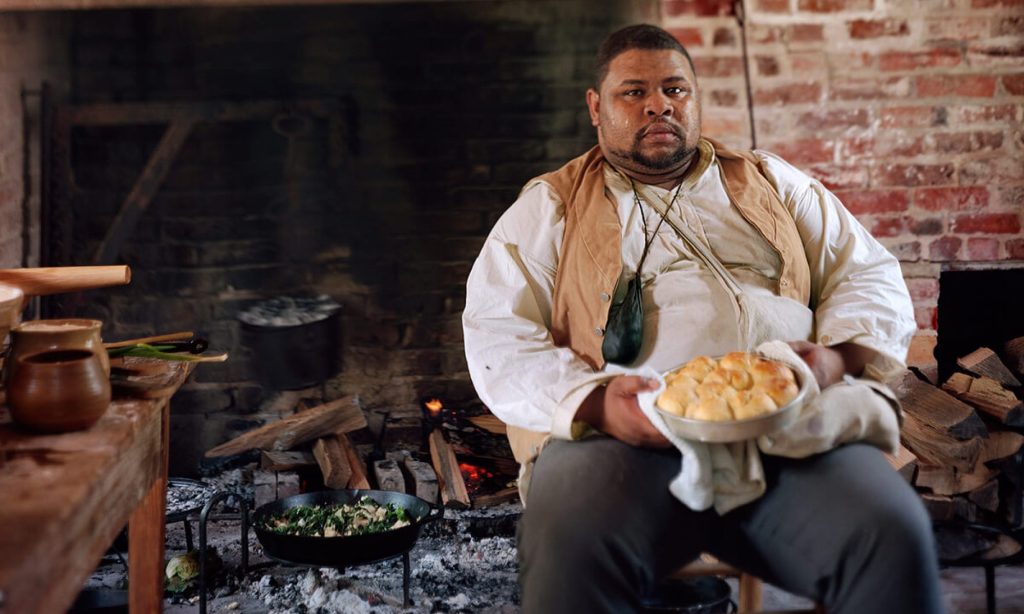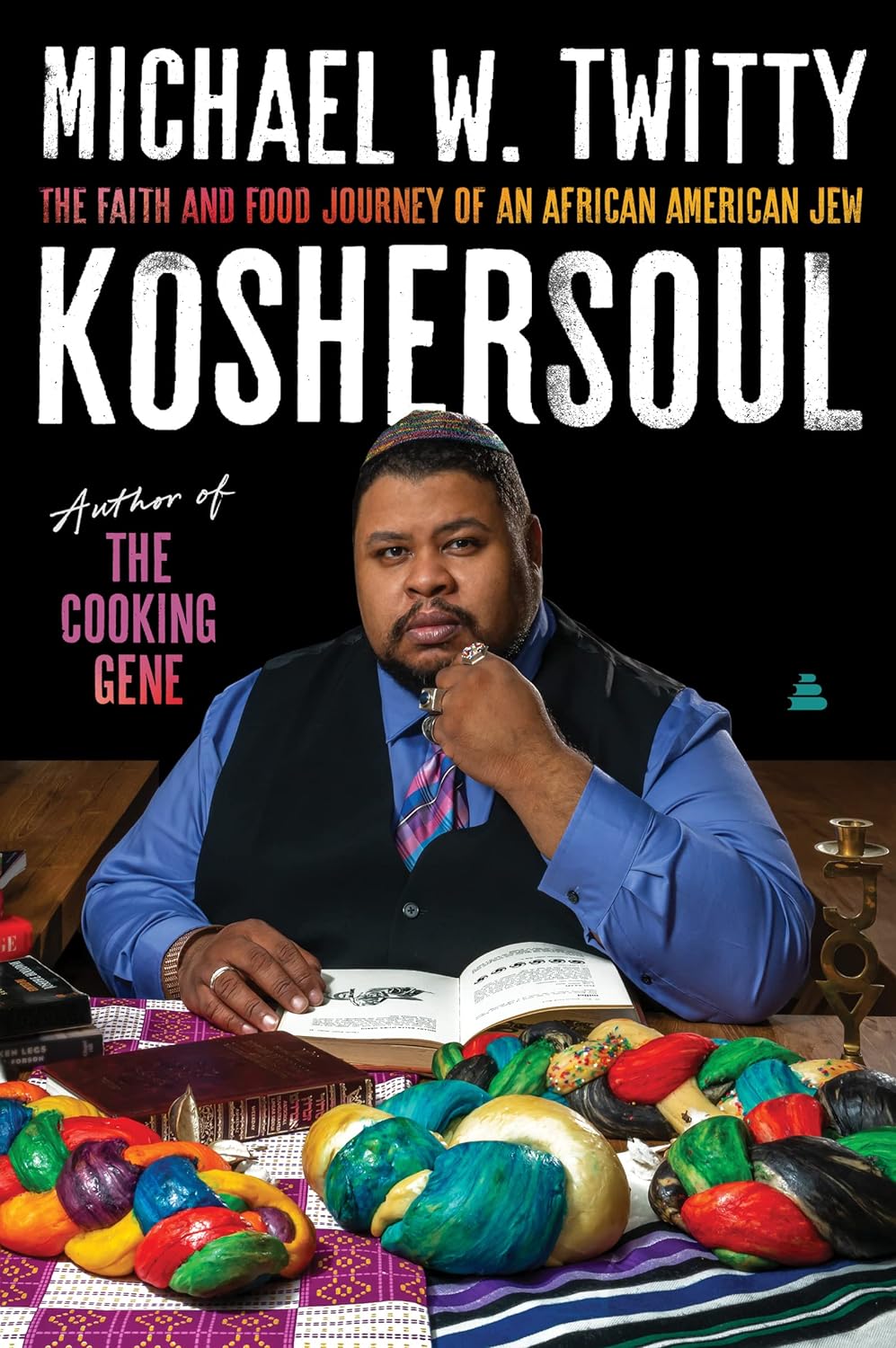“most importantly, Twitty reminds us that you don’t have to be Black or Jewish to love koshersoul.”
Both a cookbook and a memoir, Koshersoul (Amistad) explores the food traditions of both Black and Jewish cultures and how for Black Jewish people, the two combine, becoming a distinctive foodway of its own.
“When I first started talking about developing this book, a fellow African American food writer asked what it was about, saying ‘So you’re not writing about Black [food]; you’re writing about Jewish [food)],” writes Michael W. Twitty, a culinary historian, living history interpreter, and Judiacs teacher in the introduction to his book. “My response was reflective: no this is a book about a part of Black food that’s also Jewish food; This is a book about Jewish food that’s also Black food because it’s a book about Black people who are Jewish and Jewish people who are Black.”
Twitty, creator of Afroculinaria, the first blog devoted to African American history, foodways, and their legacy, won both the 2018 James Beard Foundation Book of the Year Award and Best Writing Award for The Cooking Gene. His writing is thoughtful, deep, and involved, taking a deep dive into his personal history and combining it with his conversations with other Black Jews. He seeks to put this in a historical and cultural perspective, showing us how food and identity converge.

“Black and Jews in their Venn diagram have seen considerable turmoil and pain,” he writes “and this too is a fundamental ingredient.”
But no matter what is going on in the world or what has happened in the past, we all have an urge and need to eat, writes Twitty, plus an enjoyment of what we consume. This is reflected not only in his writing but also in the recipes he shares at the back of the book.
Twitty describes this section as a koshersoul community cookbook of sorts. He encourages readers when in the kitchen to feel free to adapt them to meet their own dietary practices and preferences.
The recipes presented here are categorized under holidays and religious observations: Juneteenth, Pesach/Passover, Rosh Hashanah-Yom Kippur-Sukkot, and Shabbat, among others.
The names of some of the recipes represent the different lands and regions where people came from such as Ghanian Pepper Sauce, Senegalese-Inspired Chicken Soup, Jamaican Jerk Chicken Spaghetti, West Africa Wet Seasoning, and Gullah-Geechee-Inspired Stew.
Others like Yam Latkes, Kosher Spring Rolls, Collard Green Kreplach Filling, Black Eyed-Peas with Tomatoes, Sephardic Style, and Matzoh Meal Fried Chicken define the merging of two different cultures that meld into a distinct foodway.
But most importantly, Twitty reminds us that you don’t have to be Black or Jewish to love koshersoul.
Black-Eyed Pea Hummus
Serves 4 to 6
Black-eyed peas are a strong link between the two Diaspora cuisines, probably meeting in the Nile River Valley and the Fertile Crescent. Originally from ancient West Africa, black-eyed peas are a significant part of the cuisine of the Levant to this day, moving with African people throughout the region. Hummus, emblematic and beloved by many cultures in the Levant—is a dish that relies on the staple legume of the Arab farmer and ancient biblical standby, the chickpea. Here the black-eyed pea, loaded with mystical symbolism and its own honored place in West and Central Africa, replaces the chickpea. — Michael Twitty
- 1 15-ounce can black-eyed peas, rinsed and drained
- 1⁄4 cup extra virgin olive oil
- 1⁄3 cup tahini
- 1⁄2 cup fresh lemon juice
- 1 ½ teaspoons kosher salt
- 4 garlic cloves, chopped
- 1 teaspoon sweet or smoked paprika
- 1⁄2 teaspoon ground cumin
- 1⁄2 teaspoon ground coriander
- 1⁄2 teaspoon chili powder
- 1 teaspoon brown or turbinado sugar
- 1 teaspoon hot sauce
- 2 teaspoons minced parsley, for garnish
Throw everything but the parsley into a food processor and blend until smooth. Taste and add more spice, hot sauce, or whatever you think it needs. To serve, sprinkle parsley and drizzle olive oil on the top.
This article originally appeared in the New York Journal of Books.

